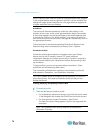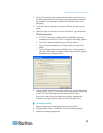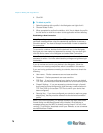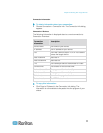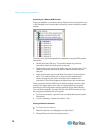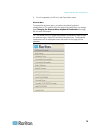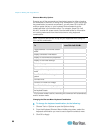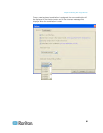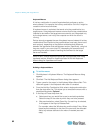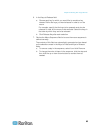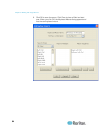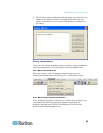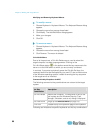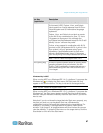
Chapter 3: Working with Target Servers
82
Keyboard Macros
A hot key combination is a set of keystrokes that performs an action
when pressed. For example, the hot key combination Ctrl+Alt+0 might be
created to minimize all windows.
A keyboard macro is a shortcut that sends a hot key combination to a
target server. Using keyboard macros ensures that hot key combinations
intended to be used on the target server are sent to and interpreted only
by the target server, and not by the computer on which the client is
running.
Raritan strongly suggests the use of keyboard macros instead of hot key
combinations since certain hot key combinations have been found not to
work properly, depending on the platform and behavioral difference
between the application and web browser version. Specifically, using hot
keys can result in your own client PC intercepting the command and
performing the action instead of sending the command to the target
server as intended.
Note: In MPC, foreign keyboard layouts are not supported when using
keyboard macros, except for those keys listed in the Add Keyboard
Macro dialog for Japanese and Korean.
Building a Keyboard Macro
To build a macro:
1. Click Keyboard > Keyboard Macros. The Keyboard Macros dialog
appears.
2. Click Add. The Add Keyboard Macro dialog then appears.
3. Type a name for the macro in the Keyboard Macro Name field. This
name will appear in the Keyboard menu after it is created.
4. From the Hot-Key Combination field, select a keyboard combination
from the drop-down list. This allows you to execute the macro with a
predefined keystroke. Optional
5. In the Keys to Press drop-down list:
a. Select each key you would like to use to emulate keystrokes.
Select the keys in the order by which they are to be pressed.
b. After each selection, select Press Key. As each key is selected,
it will appear in the Keys to Release field.
For example, select the Windows key and the letter D key. When
these keys are selected in the client, the macro will be executed.
Add a key release attribute to the macro if needed (see next
step).



